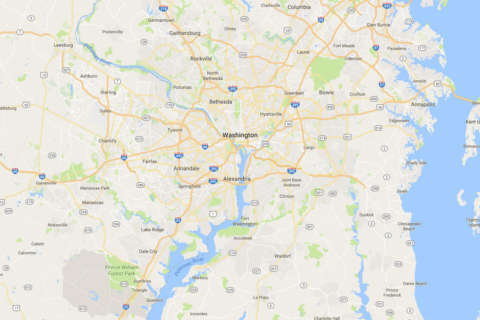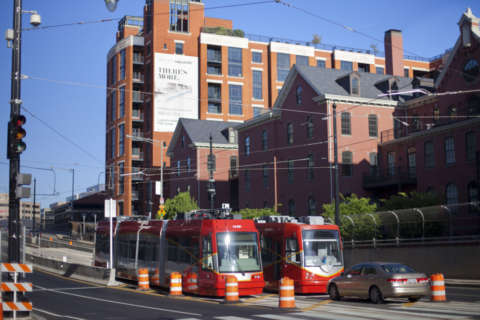
WASHINGTON — The DC Circulator serves richer, whiter areas of the city, which is leaving other residents out, the Amalgamated Transit Union said in a new report that argues District government should take full control of the privatized service.
“The District has focused on developing a … privately-operated transit system that benefits its newer and wealthier residents and the businesses and institutions that employ and serve them. Meanwhile, tens of thousands of transit workers and hundreds of thousands of riders who do not fit the preferred profile are seeing their livelihoods and lifelines erode,” said the report released by the parent union of the separate locals that represent Circulator drivers and Metro workers.
The report cites the way the Circulator system was developed with the backing of local developers and business improvement districts and census data that shows areas served by the Circulator are 15 percent whiter than the District population as a whole.
“Public services must first and foremost serve the public good, not the needs of private profit,” the report argues.
The District is responsible for and subsidizes the bus service, but has contracted out operations and maintenance. Metro has a separate contract with the city to oversee the operations and maintenance, although there have been issues with the fleet that have contributed to bus delays.
The report also opposes so-called “premium” transit services designed to separate wealthier riders from other existing options, and asks for transit spending to be “directed toward the mobility needs of residents, especially those who lack transit access, rather than the demands of regional developers.”
The city has been looking into options for locations and designs for a new Circulator maintenance facility that would provide enough space for maintenance and allow the city the option of switching contractors. First Transit, which runs the service today, was the only option at the time the contract was awarded because the contractor had to have its own maintenance facilities available.
Still, the union report argues the service simply exists as part of a larger plan to attract “vaguely-defined ‘Millennials’.”
“It envisions cosmetic urban improvements to attract them: an unprotected bike lane here, a privately-built rail segment there, a WiFi-equipped bus that runs between new condos, downtown offices, and a night life spot. It is then propositioned by a private contractor. They promise that they can provide these services less expensively and more effectively than the city itself. It sounds too good to be true, because it is,” the report said.
“You get what you pay for,” the report underlines.
The union calls on D.C. residents to join workers to press for changes.
“With riders and workers aligned, they have the power to demand bus service that serves all of the residents of the District, rather than one that only subsidizes the leisure of city elites,” the report said. “They can demand that transit projects serve community needs rather than functioning simply as toys for regional developers.”
Certain changes might face opposition, such as reducing the overlap between Circulator and Metrobus routes, the union said.
“The decision to run the Circulator in areas with a wealthier, whiter population created a politically influential constituency for the service. This in turn has created pressure on local politicians to defend the service and expand it, even into neighborhoods that are already covered by the existing Metrobus network,” the report said.
A Circulator trip costs $1. Metrobus fares are set to rise to $2 on June 25.
“The end result is that costs are shifted away from the Circulator’s riders and toward District taxpayers as a whole, most of whom derive no direct or indirect benefit from the service. The general public is subsidizing a service designed to serve the District’s whiter, wealthier residents and tourists,” the report argues.
The report also recaps the long history of issues with the DC Streetcar’s piecemeal planning and construction process, including a section titled “The train to nowhere for no one.”
D.C. is trying to address that with a streetcar extension beyond the Minnesota Avenue Metro Station to the Benning Road Station in the coming years, and a longer-term extension to Georgetown. Such an extension would have been especially useful this week while the Orange Line shut down east of Stadium-Armory for track work.
The streetcar is free to ride.







